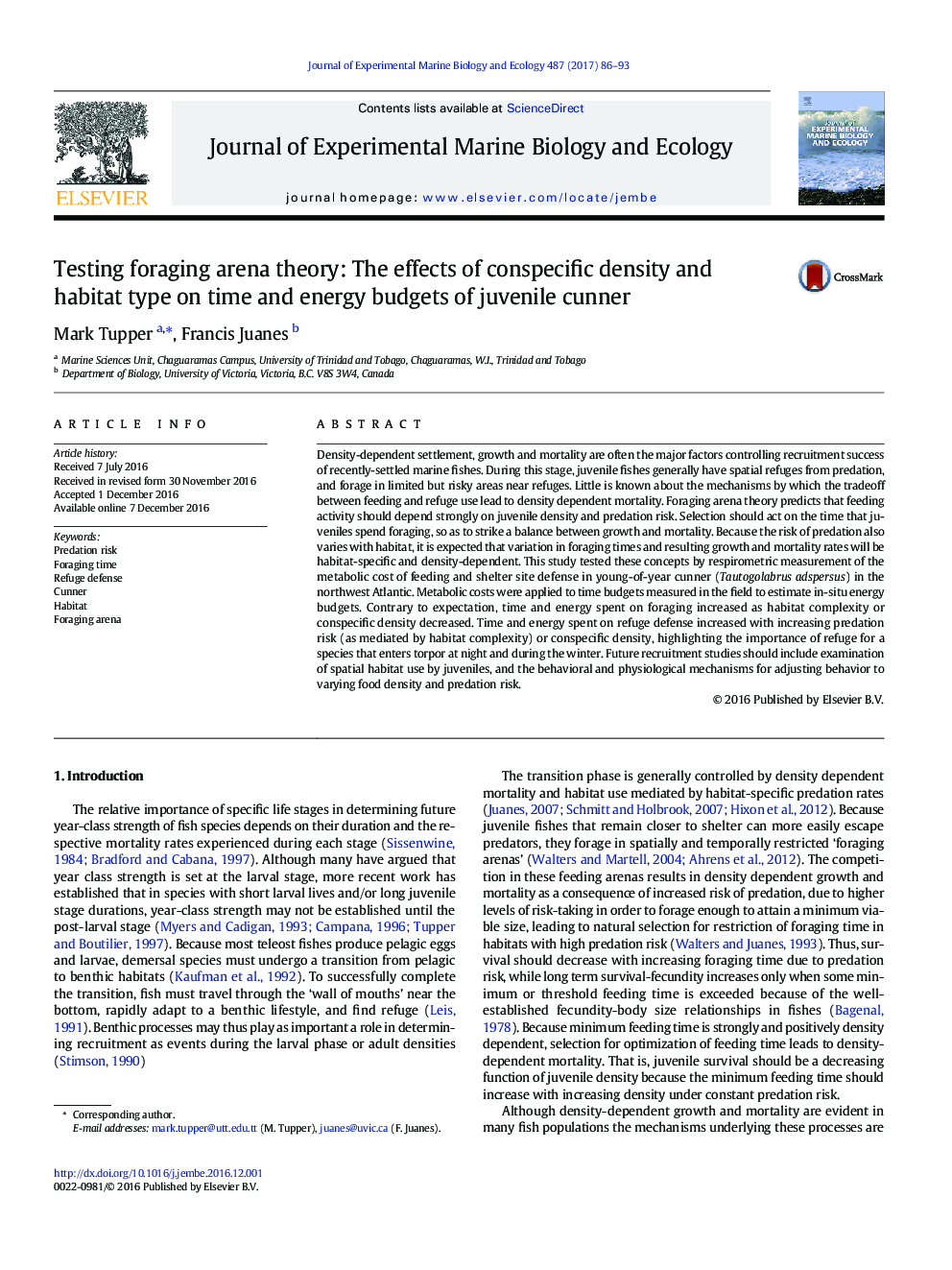| کد مقاله | کد نشریه | سال انتشار | مقاله انگلیسی | نسخه تمام متن |
|---|---|---|---|---|
| 5744583 | 1618388 | 2017 | 8 صفحه PDF | دانلود رایگان |
- Predictions of foraging arena theory were tested using young-of-year cunners
- Metabolic costs of feeding and shelter site defense were measured as functions of habitat and conspecific density
- Foraging time and energy increased as habitat complexity or conspecific density decreased
Density-dependent settlement, growth and mortality are often the major factors controlling recruitment success of recently-settled marine fishes. During this stage, juvenile fishes generally have spatial refuges from predation, and forage in limited but risky areas near refuges. Little is known about the mechanisms by which the tradeoff between feeding and refuge use lead to density dependent mortality. Foraging arena theory predicts that feeding activity should depend strongly on juvenile density and predation risk. Selection should act on the time that juveniles spend foraging, so as to strike a balance between growth and mortality. Because the risk of predation also varies with habitat, it is expected that variation in foraging times and resulting growth and mortality rates will be habitat-specific and density-dependent. This study tested these concepts by respirometric measurement of the metabolic cost of feeding and shelter site defense in young-of-year cunner (Tautogolabrus adspersus) in the northwest Atlantic. Metabolic costs were applied to time budgets measured in the field to estimate in-situ energy budgets. Contrary to expectation, time and energy spent on foraging increased as habitat complexity or conspecific density decreased. Time and energy spent on refuge defense increased with increasing predation risk (as mediated by habitat complexity) or conspecific density, highlighting the importance of refuge for a species that enters torpor at night and during the winter. Future recruitment studies should include examination of spatial habitat use by juveniles, and the behavioral and physiological mechanisms for adjusting behavior to varying food density and predation risk.
Journal: Journal of Experimental Marine Biology and Ecology - Volume 487, February 2017, Pages 86-93
